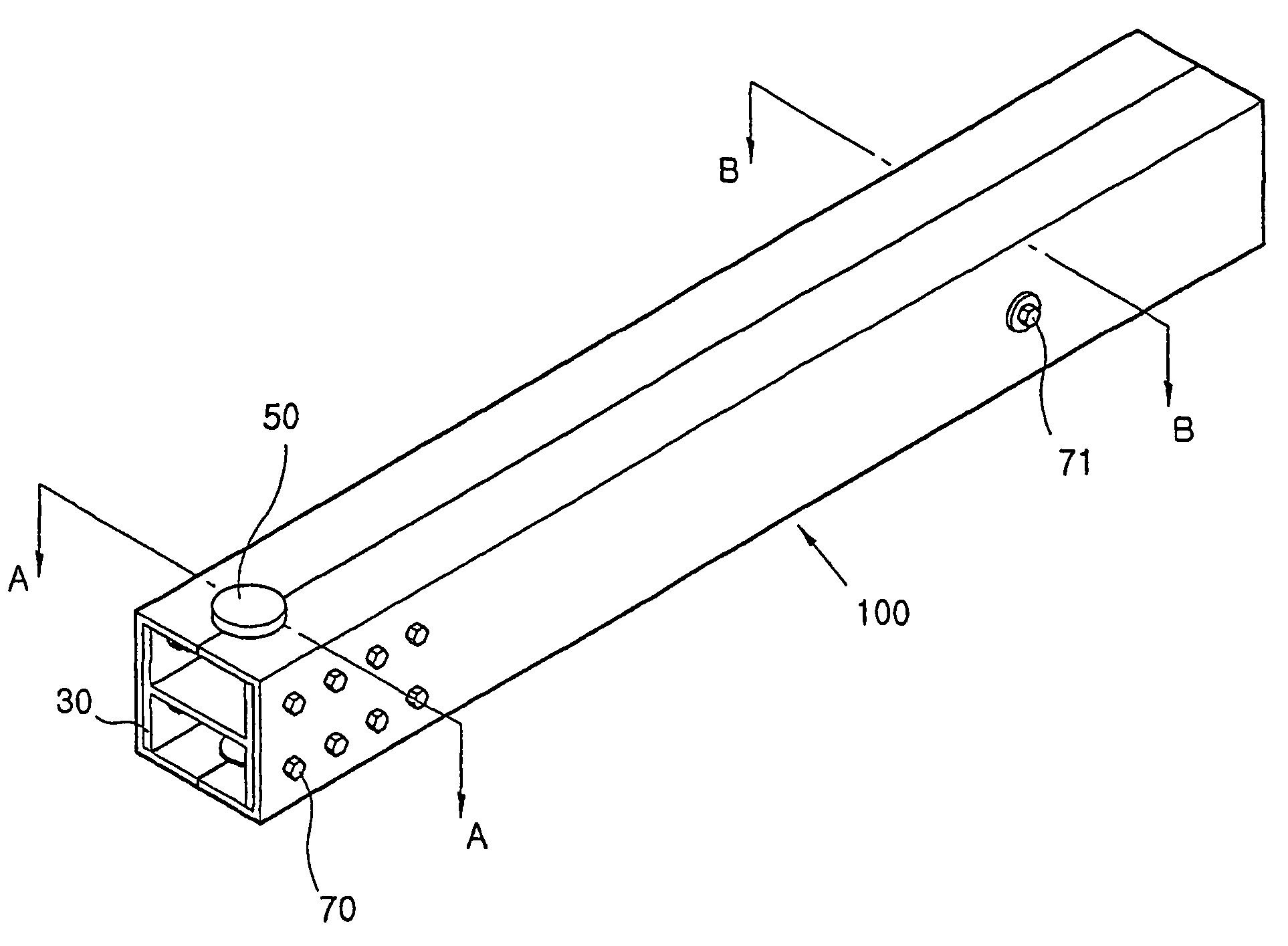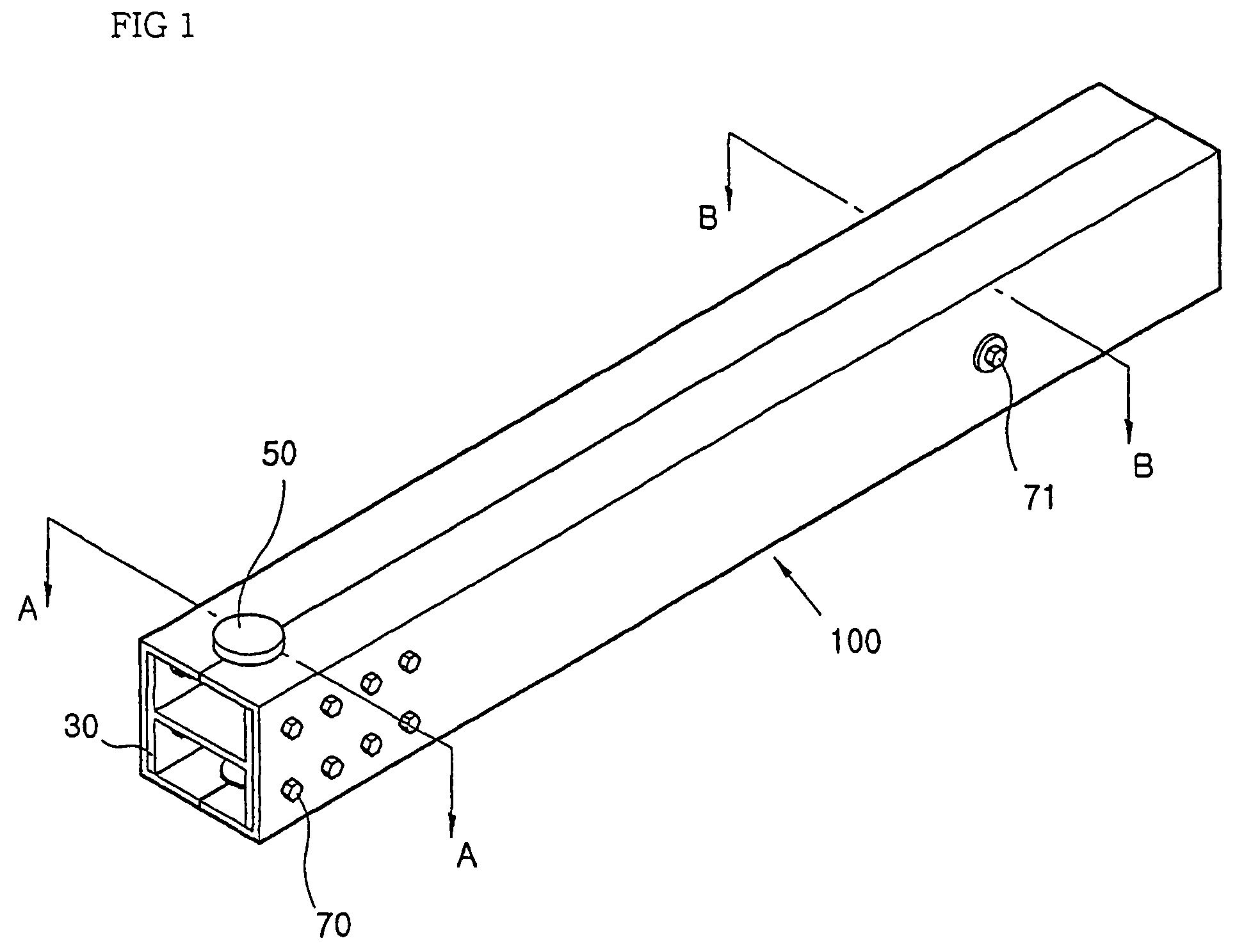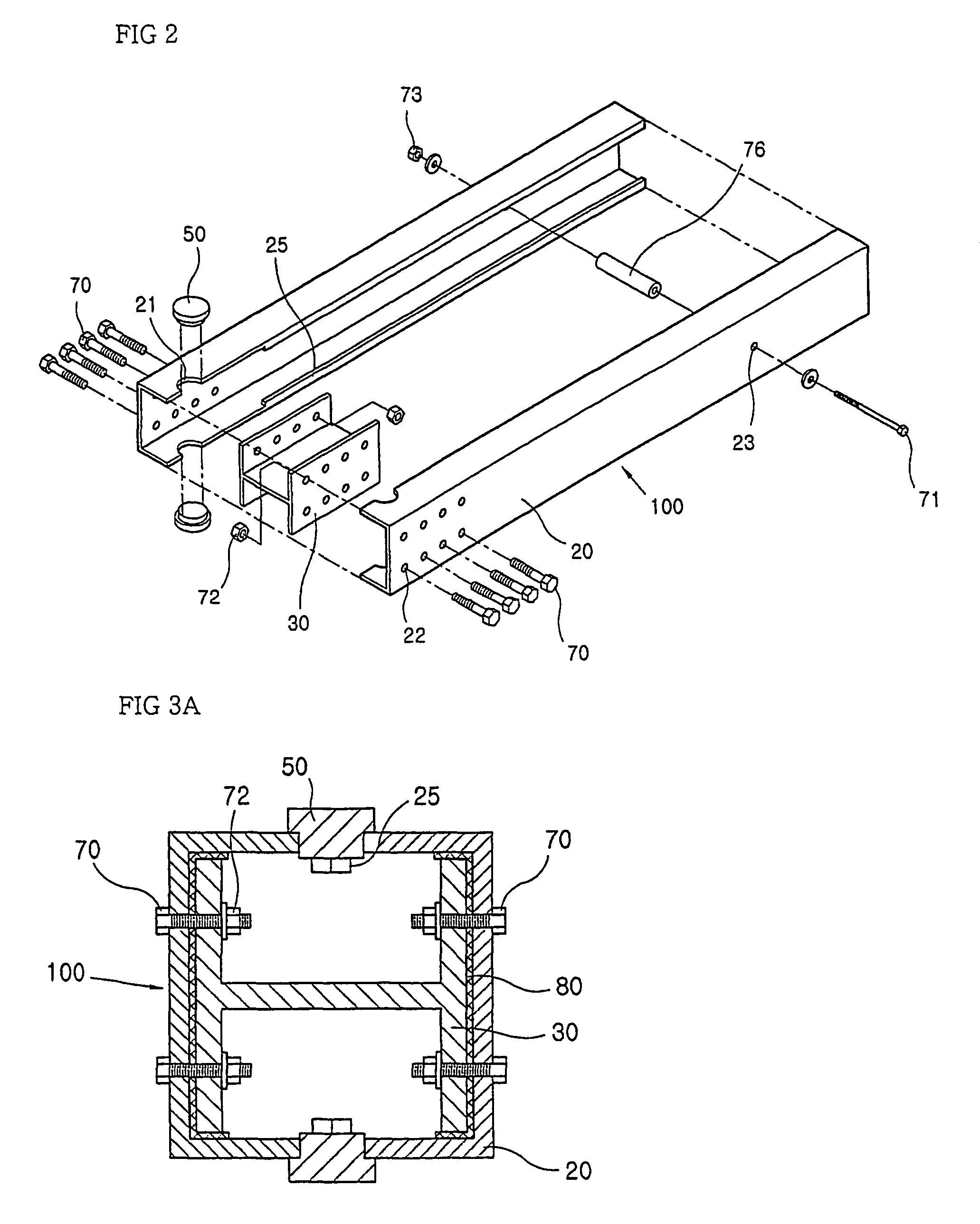Tubular structure and modular building assembly using the same
a tubular structure and modular technology, applied in the direction of girders, joists, trusses, etc., can solve the problems of affecting the efficiency of assembly, and difficult to maintain heat isolation at the beam and pillar connection sections
- Summary
- Abstract
- Description
- Claims
- Application Information
AI Technical Summary
Benefits of technology
Problems solved by technology
Method used
Image
Examples
first embodiment
[0065]Referring to FIGS. 1 through 3B, a tubular structure according to the present invention is made of two channels, that is, first and second channels 20 each having a C-shaped section with inwardly bent lips or flanges, in which the first and second channels 20 are opposed to each other and assembled with each other. In each of the first and second channels 20, connection holes 22 are formed on the wide surfaces, flanges 25 which are bent inwards are formed at the edges of the opening sides on the narrow surfaces, and the flanges 25 are removed from the edges of the opening sides on the narrow surfaces only at the portions where the connection holes 22 are formed.
[0066]Also, the half a working access hole 21 is located on each of the narrow surfaces of the first and second channels 20. After assembly, a closure 50 is inserted in each of the working access holes 21.
[0067]Connection holes 23 are located at the intermediate portion on each of the wide surfaces in the tubular struct...
second embodiment
[0073]In the tubular structure according to the present invention as shown in FIGS. 5A and 5B, the channels each having the C-shaped section which are the first and second channels 20a each having the same section are aligned to face each other and assembled with each other. In each of the first and second channels 20a, the connection holes 22 are formed on the wide surface in which the narrow surface is formed inwards from the channel.
[0074]Also, the half a working access hole 21 is formed on each of the narrow surfaces of the first and second channels 20a. After assembly, a closure 50 is inserted therein and removed therefrom.
[0075]The connection holes 23 are located in the intermediate portions of the tubular structure and fitted with a long bolt 71 and are engaged with a nut 73, to thereby support the intermediate portions of the first and second channels 20a.
[0076]Like the first embodiment of the present invention, a spacer 76 mounted on a long bolt 71 is provided in the insid...
third embodiment
[0079]Referring to FIGS. 6A and 6B, channels 20b applied in the tubular structure according to the present invention each have an L-shaped cross-section and are opposed to each other and assembled with each other.
[0080]Since the working access holes 21, the connection holes 22 and 23, the closure 50 and the reinforcement unit in the third embodiment are provided like the first and second embodiments, the detailed description thereof will be omitted.
[0081]FIG. 7 is a perspective view showing part of the whole tubular structure illustrating examples of connection structures of the pillar and pillar and beam and beam according to the present invention.
[0082]Referring to FIG. 7, the lower portion of the pillar structure according to the present invention is a portion “A” which is vertically mounted on a concrete foundation 10. Also, the beam structure is a portion “B” which is extended from the lateral portion of the pillar structure. That is, the pillar structure is vertically fixed on...
PUM
 Login to View More
Login to View More Abstract
Description
Claims
Application Information
 Login to View More
Login to View More - R&D
- Intellectual Property
- Life Sciences
- Materials
- Tech Scout
- Unparalleled Data Quality
- Higher Quality Content
- 60% Fewer Hallucinations
Browse by: Latest US Patents, China's latest patents, Technical Efficacy Thesaurus, Application Domain, Technology Topic, Popular Technical Reports.
© 2025 PatSnap. All rights reserved.Legal|Privacy policy|Modern Slavery Act Transparency Statement|Sitemap|About US| Contact US: help@patsnap.com



